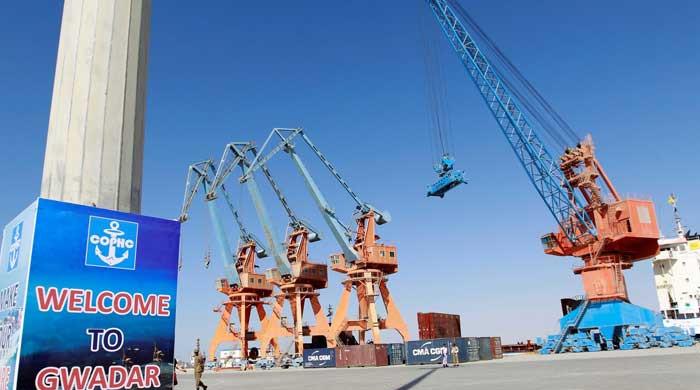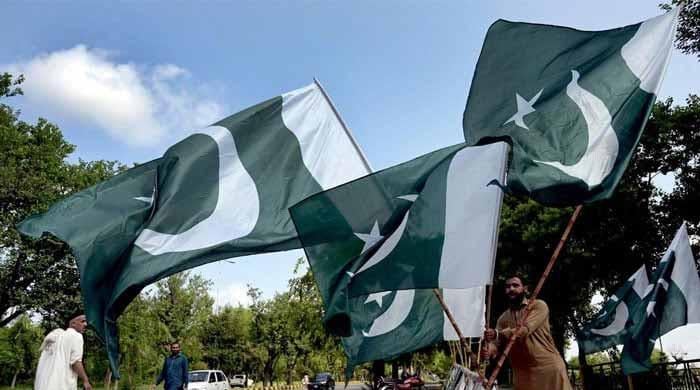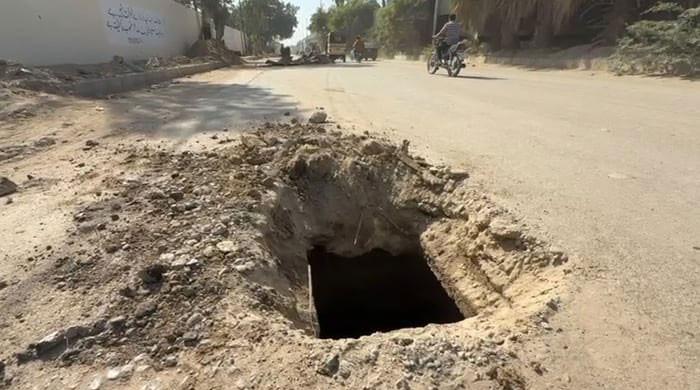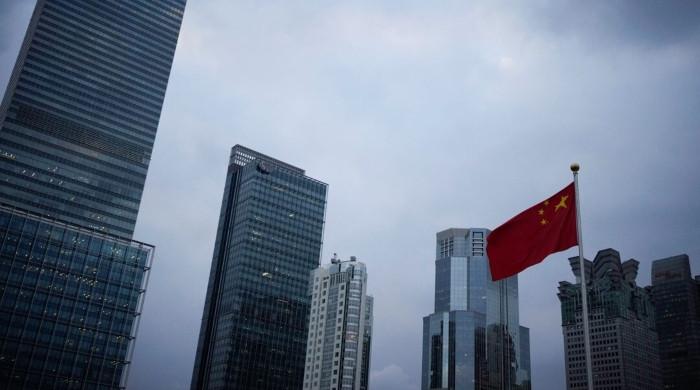What Israel and the US didn't achieve
In the 12-day war of aggression, Israel and the US alone cannot be given credit for the major political setback
July 01, 2025
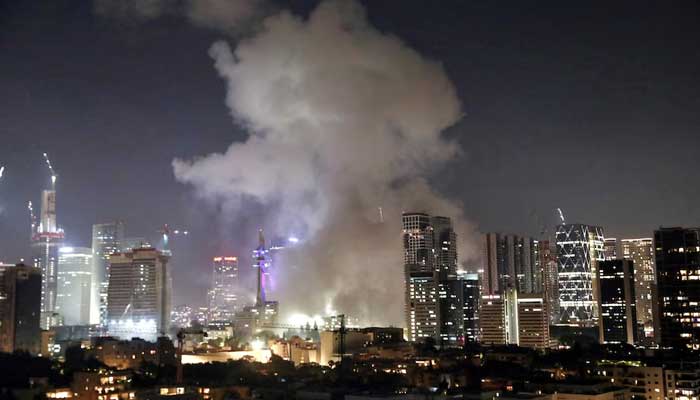
The 12-day war of aggression waged principally by Israel against Iran has been fascinating for its starkness on multiple fronts. Much like Israel’s genocide of the Palestinians, on open display yet unstoppable, the falsehood and illegality of both Israeli and American words and actions continued unabated throughout the war.
It was, in every way, a no-holds-barred affair: the facts, the rhetoric, the deceit. And this wasn’t about domestic politics or some marginal policy issue. This was about taking nations to war. It was about planning to tear down a country, deploying weapons and unloading tonnes upon tonnes of missiles.
It was about flaunting cutting-edge technology, including 30,000-pound GBU-57 bunker buster bombs, to be dropped by the B-2 bombers – the most expensive planes ever built, worth $2.2 billion each.
The logistics story was made captivating, numbing the mind to more critical questions – such as what these 30,000-pounders could achieve when targeting material located more than a kilometre beneath the earth.
Reports were sent out dutifully about the unprecedented 'heroic' 37-hour-long missions of the B-2 bomber pilots, who would drop fourteen of these bombs, guaranteeing annihilation and destruction at three sites.
The power-wielding architects of this dramatically worded bombing mission spread their ‘faith’ with conviction. The shrill messaging around this unprecedented, colossal task was delivered in fascistic simplicity: that the ‘noble’ objective was to rid the world of the 'most dangerous threat' to global security.
The mission, they claimed, would demolish Iran’s nuclear programme once and for all. Israel had been making the claim for over two decades – and was now seconded by US President Donald Trump – that Iran was just months away from producing nuclear weapons for what they called the world’s most dangerous and dreaded regime.
Thus, the shrill rhetoric proliferated globally. Digital and legacy media buzzed with talk of the mission, of bombers and bombs, of Top Gun-style pilots in Tom Cruise mode who had rehearsed every step of ‘Mission Annihilate'.
All the rest was drowned out. Questions about the impact on areas and people surrounding the nuclear sites of Isfahan, Fordow and Natanz – and above all, concerns about possible radiation from these bombed sites, where the world had been told Iran held several hundred kilograms of enriched uranium – surfaced only as outlier opinions.
The dominant mood in the power corridors of the US, most Western nations and India was one of rah-rah, let’s gun for Iran. Questions did emerge regularly, but they evaporated just as quickly. Often, this was because the lead decision-maker, President Donald Trump, would simply brush off all concerns, almost mocking any journalist who dared to raise them.
This was a fantasy being spread, much like the ugly truth that was systematically concealed about a hundred years ago. It was the truth of how today’s aggressor, Israel, was born – and who actively midwifed its then-illegitimate birth.
That concealed truth was about how Palestinians were robbed of two-thirds of their land, and how Irgun and Haganah, the two terrorist Zionist organisations, killed, maimed and pushed out from Palestine its rightful owners, who were actively resisting the occupation of their land.
Significantly, in the 12-day war of aggression, Israel and the US alone cannot be given credit for the major political, military and psychological setback it represented. Much of the West had politically and diplomatically partnered with the aggressors.
The Israel–US duo’s determination to deny Iran nuclear weapons was shared by most European governments, as well as the EU.
German Chancellor Friedrich Merz unabashedly stated that he was happy that “Israel is doing [this] for all of us. We’re also affected by this regime. This Mullah regime has brought death and destruction over the world. The dirty work that Israel did here – I can only say that I have the highest respect that the Israeli army was courageous enough, that the Israeli government was courageous enough to do this. Otherwise, we possibly would have seen this terror made by this regime for months and years, and possibly with a nuclear weapon in their hand".
These deeply partisan, hate-ridden words in praise of the aggressor were, of course, spoken somewhat prematurely.
Nato Secretary General Mark Rutte also sent a profusely congratulatory WhatsApp message to Trump, which Trump then posted on social media: “Thank you for your decisive action in Iran. That was truly extraordinary and something no one else dared to do. It makes us safer…” Rutte wrote. Again, prematurely.
Only on Switzerland’s foreign ministry website did a post appear that cautioned against the aggressors' complete disregard for legality. It read: “Switzerland emphasizes the importance of full respect for international law, including the UN Charter and international humanitarian law.”
However, beyond all the bravado and chest-thumping by the self-declared winners of the 12-day war lay the uncomfortable reality: Not even one of the three objectives that Netanyahu and his team had bragged they were determined to achieve was fulfilled – no regime change, no destruction of Iran’s nuclear capability and no major disabling of Iran’s missile infrastructure.
Satellite imagery shows only limited irreversible damage to Iran’s storage and launch sites. Iran’s stockpiles of its most advanced ballistic missiles were largely left intact.
The dramatic B-2 bombers and 30,000-pound bombs weren’t able to destroy Iran’s nuclear capability. The core components of Iran’s nuclear facilities were not destroyed – at best, their progress was delayed by only a few months.
The first to report this was the US’s own Defense Intelligence Agency (DIA). CNN quoted their report, noting that no irreversible damage had been done and that more information was required from the actual nuclear sites to confirm the extent of the damage. Both the IAEA and DIA conceded that, without access to the sites, all estimates were merely “guesstimates". Claims of “obliteration” or “significant damage” were baseless.
Trump’s assertions that the 30,000-pound bombs had “obliterated” Iran’s programme at depths of over 800 meters beneath a mountain at the Fordow facility clashed with the IAEA’s conclusion that the programme had only been delayed by a few months, with all of Iran’s enriched uranium safely stashed away – unreachable to everyone but the Iranians. And the majority of the centrifuges had not been damaged.
The IAEA’s own duplicity was unmistakable. Rafael Grossi, head of the UN nuclear watchdog, said on June 23 that the airstrikes had probably caused "very significant" damage to Fordow, a major uranium enrichment facility. Yet the IAEA subsequently veered toward the DIA’s more cautious assessment.
As for what has long been deployed by Washington as a ‘legitimate’ policy tool – the removal of governments in foreign lands through force, sabotage and other means – that too failed. After all, Iran is neither Syria, Iraq, nor Libya, nor even the Iran of 1953.
This was not a regime that could be brushed aside easily. Iran’s revolution-hardened, four-decade-old government stood its ground. Paradoxically, for a regime already facing multiple domestic challenges, Israeli aggression somewhat boosted its political fortunes. Nationalist sentiment rose.
After the war, despite mounting economic and security problems, Iran’s regime emerged more confident and self-assured, having successfully fought back and survived the much-hyped Israeli-US war machine.
Amid the widespread chatter about what comes next, only two facts appear reliable. First, and fortunately, beyond all the litter of whimsical, flashy and fictional verbosity, there are signs of re-engagement between the two principal players: Iran and the US.
Trump has publicly criticised some of Israel’s recent actions, while in important circles in Tehran, there is recognition that indirect communication between Iranian and American officials continues. Some Iranians even see in Trump a potential president willing to pursue an 'America First', not 'Israel First', policy.
The second important development appears to be a ceasefire in Gaza. But does this mean progress toward a definitive two-state solution or merely a deceptive lull, under the cover of which the 'Greater Israel' agenda advances? At present, with a disengaged Arab and Muslim world, Donald Trump remains – somewhat paradoxically – central to advancing a lasting and viable solution for Palestine. And that solution, clearly, is a two-state one.
The writer is a senior journalist. She tweets at @nasimzehra and can be reached at: [email protected]
Disclaimer: The viewpoints expressed in this piece are the writer's own and don't necessarily reflect Geo.tv's editorial policy.
Originally published in The News




